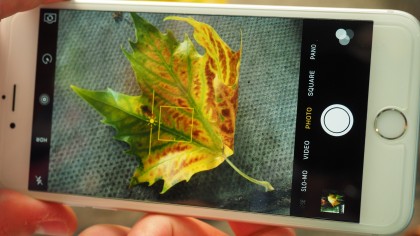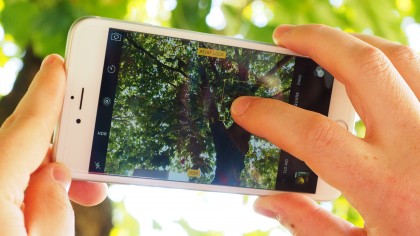iPhone 6S camera tested in depth
We test Apple's hyped-up iPhone 6S Plus camera in the real world – and get a few surprises
On the surface, the iPhone 6S camera app is really simple to use. You can just point it at the subject you want to photograph, tap the shutter button and it takes the picture – it takes care of both the focusing and exposure automatically, recognizing any faces in the scene and using the HDR mode if the brightness range in the scene is too high for the camera to capture with a regular exposure.
DP:
You can use the volume controls as an alternative shutter release, but I prefer the on-screen button. Pressing the volume buttons weakens your grip on the phone, especially when you're holding it horizontally. You're also more likely to jog the camera.
There is one obvious limitation compared to a regular digital camera – there's no zoom. You can use a digital zoom function, but this simply blows up a smaller area of the picture, sacrificing pixels and resolution. We wouldn't recommend digital zoom on any camera.
So you can't zoom in optically on objects which are further away – the only way to make them bigger is to get closer (long ago, almost all photographs were shot this way…). This feels like a major restriction at first – it certainly rules out any kind of long-distance sports or wildlife photography – but after a while you adapt, and you start to notice that in some ways it's a very liberating thing. There's less to think about when you're taking pictures, leaving you free to concentrate on what you're photographing. iPhone photography is spontaneous and instinctive. It makes you explore and interact with your subjects much more closely, which often yields photographs and angles you wouldn't have thought of before.
The other restriction is that there are no manual controls for exposure or focus, two of the first things you'd look for in any kind of serious camera. There are, however, features which achieve practically the same thing.
Focus and exposure adjustment

First, you can simply tap anywhere on the screen to lock the focus and exposure at that point – it's like spot metering and manual focus point selection rolled into one (there are third-party camera apps which can separate the focus and exposure points so that you can set them individually).
Get daily insight, inspiration and deals in your inbox
Sign up for breaking news, reviews, opinion, top tech deals, and more.
DP:
It's so useful to be able to tap the screen to set the focus and exposure on a particular area. I do this on my DSLR too, but it's super-quick on the iPhone.
It goes even further than that, though. Alongside the focus/exposure box is an exposure compensation slider – you can drag up and down on the screen (you don't have to drag on the slider gadget itself, dragging anywhere on the screen will do) to increase or reduce the exposure level. This is especially useful if you're shooting intrinsically light or dark subjects, which tend to fool any light metering system.
AE/AF lock
The camera app goes further than this, though. If you tap and hold, the camera applies an AE/AF lock function that persists even after you've taken the picture and you're lining up the next. It's a way of fixing the focus and exposure across a whole series of pictures, which can be really useful if the background is changing, say, but the lighting on your subject is staying the same.

This AE/AF lock function doesn't just work in the Photo mode. You can also use it in the Pano and video modes, and this is where you start to see its real potential.
DP:
The ability to use the AE/AF lock across all sorts of modes, including panoramas and video, is a real asset.
There is a conspicuous lack of any reference to white balance. The camera does a good job of correcting the colours in a range of outdoor and indoor lighting conditions, but you have no direct control over the setting. It does appear to be locked at the same time as the focus and exposure settings, however.
So one way or another it's not difficult to get shots looking just how you want them – and the iPhone does produce a really good hit-rate of technically successful pictures.

Rod is an independent photographer and photography journalist with more than 30 years' experience. He's previously worked as Head of Testing for Future’s photography magazines, including Digital Camera, N-Photo, PhotoPlus, Professional Photography, Photography Week and Practical Photoshop, and as Reviews Editor on Digital Camera World.